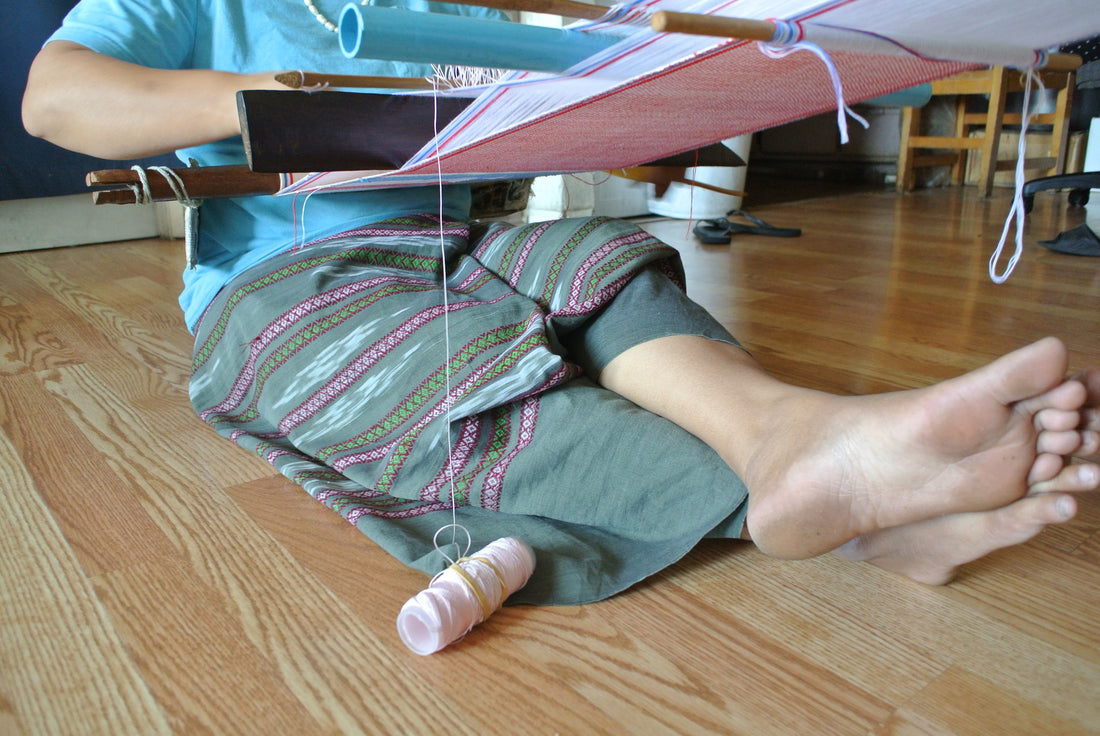Utilizing simple backstrap looms in the weaving of textiles is a staple of cultures throughout the world, from Guatemala to Burma. This type of loom is so ancient that some historians believe it may actually pre-date history. Yet here in the U.S., the majority of us are unfamiliar with this type of textile construction and few of us really know what the process looks like.




Until very recently, I was a member of this majority-having no idea of how much technique was involved in operating this type of loom. On a visit with Thread Spun employee, Pleh, I was lucky enough to (attempt to) learn.

At first glance, I was immediately overwhelmed. There were a lot of sticks protruding everywhere, several spools of thread strewn about, and an almost sinister looking strap that was quickly fastened behind my back. Having just watched Pleh's deft hands working the loom, mine felt (and looked) extremely clumsy and out of place.



The photos above show the loom itself and many of the essential pieces for weaving (loom bars, sheds, shed rod, heddle stick, shuttle, sword/beater...and no I am not making these names up). If you are like me, you may think that if you were to understand and master the elements shown, you would be able to successfully weave on this loom. Again, like me, you would be wrong.
Take a closer look at Pleh's waist and the simple tie anchoring her to the loom. This is the backstrap, and it is actually the most important part of the loom. The backstrap allows the weaver to utilize his or her posture and positioning to create and release tension along the strings, or band, and open the sheds, or spaces between layers of threads. Essentially, the weaver utilizes the backstrap to become a part of the loom itself.
Pleh, her sister, brother-in-law and four young nephews and nieces all attempted to assist me in learning how to properly wear the backstrap and manipulate my body in a way similar to Pleh's. It is to their credit (and their credit only) that, as hopeless as I was, I wove a few simple lines. Subsequently, I was totally schooled by Pleh's ten year-old niece, who already has an almost expert grasp of the technique.



Suffice to say, I was more than impressed. It is clear that this ancient and complex tradition of weaving on a loom continues to be handed down from generation to generation, and will remain a significant part of the Karen (ethnic minority from Burma) culture. This is despite many of the Karen people having fled their traditional homes in Burma for neighboring countries like Thailand, and far-away places like the U.S.
While the textiles are beautiful- it isn't the art itself but the process that has my heart. The loom acts almost as an extension of the physical body of the wearer, reminding me of spiders spinning their silk. The textiles woven shed light on the weaver's aesthetic, yes, but also seem to manifest some existential part of the artist themselves. Watching them appear, thread by thread, offers a glimpse into the unseen.
Be sure to check out our Burma Collection, which features textiles handwoven on backstrap looms by refugee women from Burma living in Thailand. Also keep your eyes peeled for upcoming handmade surfboard bag collections highlighting the work of Guatemalan and Chin weavers.

